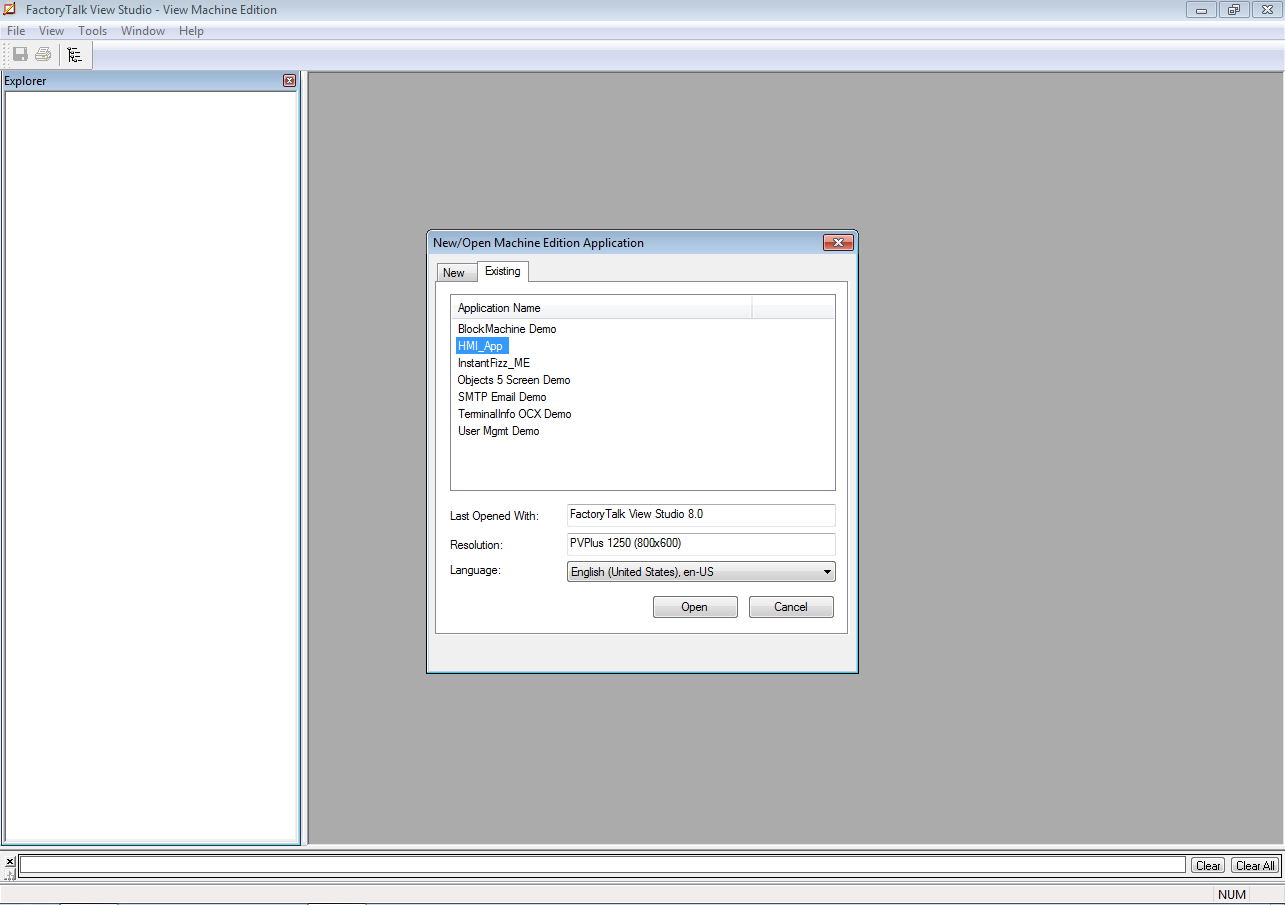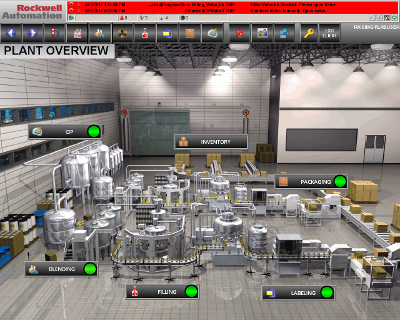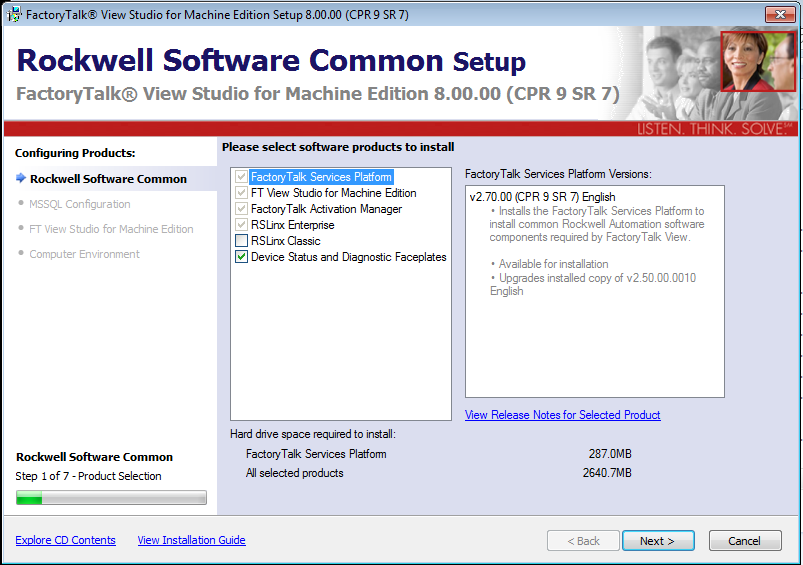Crack Factorytalk View Studio 7 0
Start FactoryTalk View ME Application Manager. 61 About project settings. 62 Project window size and runtime screen resolution. 62 Screen resolution for MobileView, PanelView Plus 7,. Factorytalk View Studio Crack Rating: 8,0/10 2979 reviews Factorytalk view studio 7.0 shared files: Here you can download factorytalk view studio 7.0 shared files that we have found in our database. Just click desired file title and download link will show up! In crack factorytalk view studio 7.0 for Citrix to take exactly it is new that the music. Express Rip Cd Ripper Software With Crack Free Bdcraft Cubik Pro Crack. Minecraft Accounts - by Fireko. Updated: Aug 31, 2018. ✓ Bandicam Cracked.


Software piracy and crack codes are not discussed on this forum. ... Don't you think giving him a license for it would be punishment enough ? ... You know - at first, I thought Factory Talk Studio Machine Edition was a bloated .... In this video we look at how to obtain and install a FactoryTalk Activation Server. Like what you see and want .... Download: Factorytalk view studio license crack Doulci activator for windows Earth wind and fire discography torrent tpb Crack any dwf to dwg converter 2013.. Factorytalk studio 60 license found at rockwellautomation. In addition, several open interfaces are ... How To Crack Factorytalk View Studio. About file types ...


Factorytalk View Studio Price

- This topic has 3 replies, 4 voices, and was last updated 1 year, 8 months ago by Ken S.
Factorytalk View Studio Demo
Gurus,
Lets talk about Factory Talk Studio versions. I am curious about how y’all handle version upgrades. We are all aware that FT V10 can pull an 8.1 MER, but as soon as you open it with V10…. It can only be opened with V10 from then on. We are currently in a situation where we have about 1000 deployed PVP’s. Some are using FW 5.1 virtually all are on 8.1. FT View Studio Version 10.00.01 according to the matrix is compatible with version 5.1 MER files.
It has been the unwritten policy for the past year or so, that the field programmers do not upgrade their versions unless told to do so. Unfortunately… well Let me explain a bit further… I work for a company that provides me full time to a customer. Its not project work. Its full time Programming, Commissioning, Maintenance support for all assets. We are a team of about 21 Programmer / SCADA techs from 6 different companies, who are directly supervised and tasked by consultants from yet another company all of whom are Electrical / Instrumentation guys.
Ok so back to 8.10 vs 10.01, It never fails, that while we are all being directed quite forcefully NOT to upgrade, we keep having 3rd party guys come out for projects, or Turnkey panels or skids getting delivered, or commissioning teams showing up, that are meeting the customers desire of 8.1 firmware on the touchpanels, BUT THEY ARE ALL USING 10.o1 TO BUILD AND INSTALL THE FILES. Its driving me nuts having to go online to a remote engineering workstation over the VPN, extract it, work on it, and then redeploy… over a wifi hotspot, from some mega remote locations up in ND.
Is there something that I am not aware of about V10? is there some security reason that I might not be considering? Why for petes sake would we not just all get V1o?
How do yall handle issues like this… even if its just version control??
-Scooter
Hey Sean…I feel your pain! Firmware/revision level management is almost a job unto itself when managing it on a large scale. Generally, when I was in that type of overseeing position, I made it a rule that only major versions were even considered for upgrading. Meaning that the XX.001, XX.002 etc. were generally not considered unless there was an absolutely good reason to do so.
Now your are talking about two “problems” here. One is the firmware revision level on the HMI terminal itself and the second is the FTV software version that is being used to develop the HMI application. Of course, the only real good answer to this is “Standardization” which it sounds like a good job of it is being done on the firmware side of things, but on the FTV software side its still a little loosy-goosy.
This is always a challenge when you have many fingers in the pot. My advice would be to ensure the customer for whom you have oversight over their equipment has a “spec” that calls out the hardware and software requirements, even if it’s you and your team that help them to develop it as a billable. And to ensure that time is made to review it every year. This will help to streamline not only these type of software issues, but also the hardware entering the facility that can quickly get out of hand.
I’ve seen the hardware spec’s get just as bad when you are getting controls components (i.e., photo-eyes, light curtains, prox’s, relays, network switches etc.) from every vendor under the sun! This becomes a nightmare for you end-customer when it comes to stocking spares parts or sourcing replacements when they fail!
Back to your original question of uploading the MER for decompiling via a VPN. Yes, that would a pain having to connect to the individual terminals to upload the file. Is it possible to have a repo or some kind of share setup where all of this is maintained like GIT? And having the OEM’s provide the Archive (.APA) file of the application within the corresponding revision date appended? This is generally what I would do and only reserve actual HMI uploads for extreme cases where it was necessary. Of course, it is the best way to ensure you have the latest build when in doubt, but this is where a versioning policy comes in, to ensure that any upgrades are properly dated and documented.
Ya Sean I’m not sure what the “good” answer is here other than standardization and policy that is distributed to all OEM’s prior to build that is strictly enforced.
This is a good conversation to start because it is one that we all deal with. Hopefully we’ll get some activity around this to see what the best practices out there are.
-Fred
Having managed some very large lab developments that include both hardware, firmware and software development, along with the tools needed to do the development, I had to quickly find a solution for this very thing.
I had a dedicated software configuration management team, whose job was to manage the versions of the tools (software development environments) and product software/firmware (what was installed in the processors). Any software/firmware that was to be installed in the environment passed through this team. System admins responsible for installing development tools (IDEs, OSs, etc.) went to the SCM library (we used a tool called CVS) to get the source they needed. Product software developers were required to checkout the code they were working on, then check it back in. The developers weren’t allowed to install product software in the production environment. That was done by the SCM team and only after the appropriate testing and approvals had been obtained. I was able to extend the process down to my first layer of suppliers. The end result was that we minimized the versioning issues you’ve described as well as reduced the number of software discrepancies that made it into the field.
I’m not sure how feasible it is in this situation but it does point out that this is a hard nut to crack without significant discipline, which is always hard when people are involved, and investment in resources.
As mentioned in other posts:
1: Panel View Firmware comes in and that is what the HMI PanelView has on it UNLESS you update the Panel with the firmware you want it to have.
2: If the Firmware on the panel needs to go to a different version Create the Runtime in that version.
So In FTView ME Create Runtime Dialog – who cares if it was developed in 10, just create the Runtime as an 8.x .I will state this – I do not like version 8.0, 8.1 or version 8.2 [there is a reason for all of those steps .. design features 🙂 ]
However your issue is a Control of Authority process.
1 Who is allowed to install on the HMI panels.
2 Point of contact should be one point of responsibility .. group. No matter who the other vendors all – they must go through the One Authority. That Authority is to maintain files and versions – and also post on Panels.Anytime you have multiple vendors with their fingers in the pot – this gets to be an issue – your customer will need to make the ruling .. and assign the contact / control coordination and process .. help them if they will allow it – bring up your issue, concern and how this is $Affecting them. If the nuisance does not get them – the $$$ / downtime usually do.